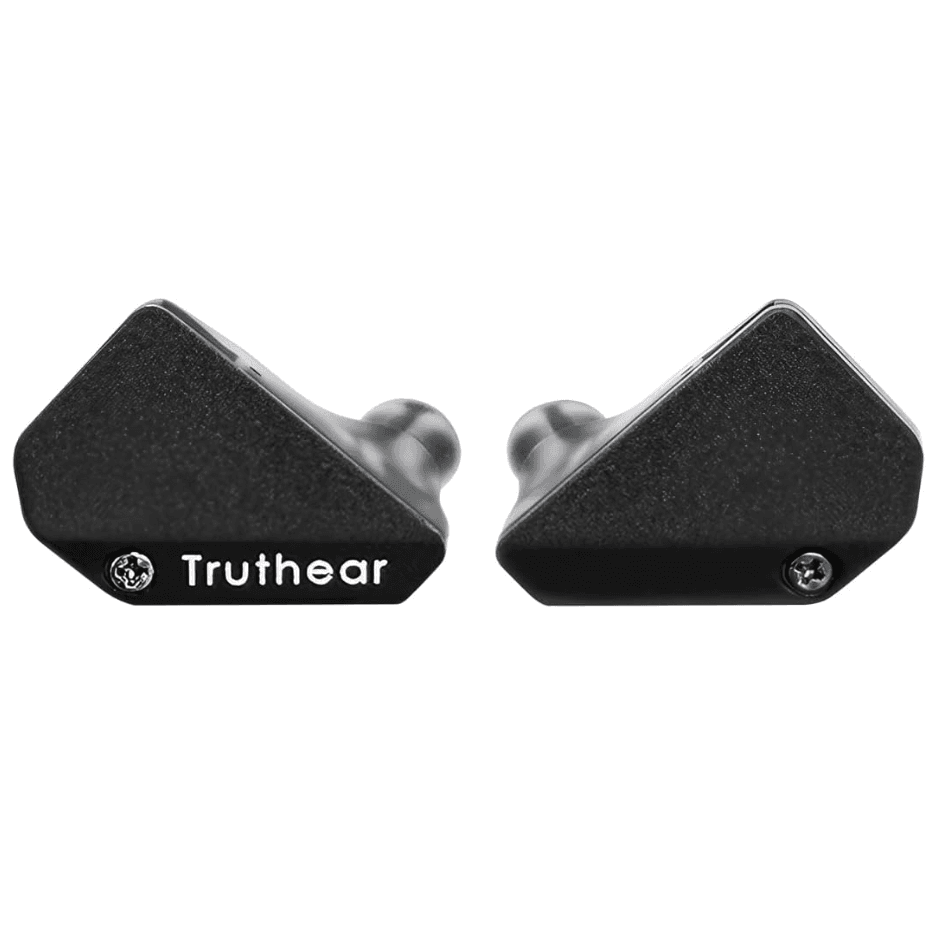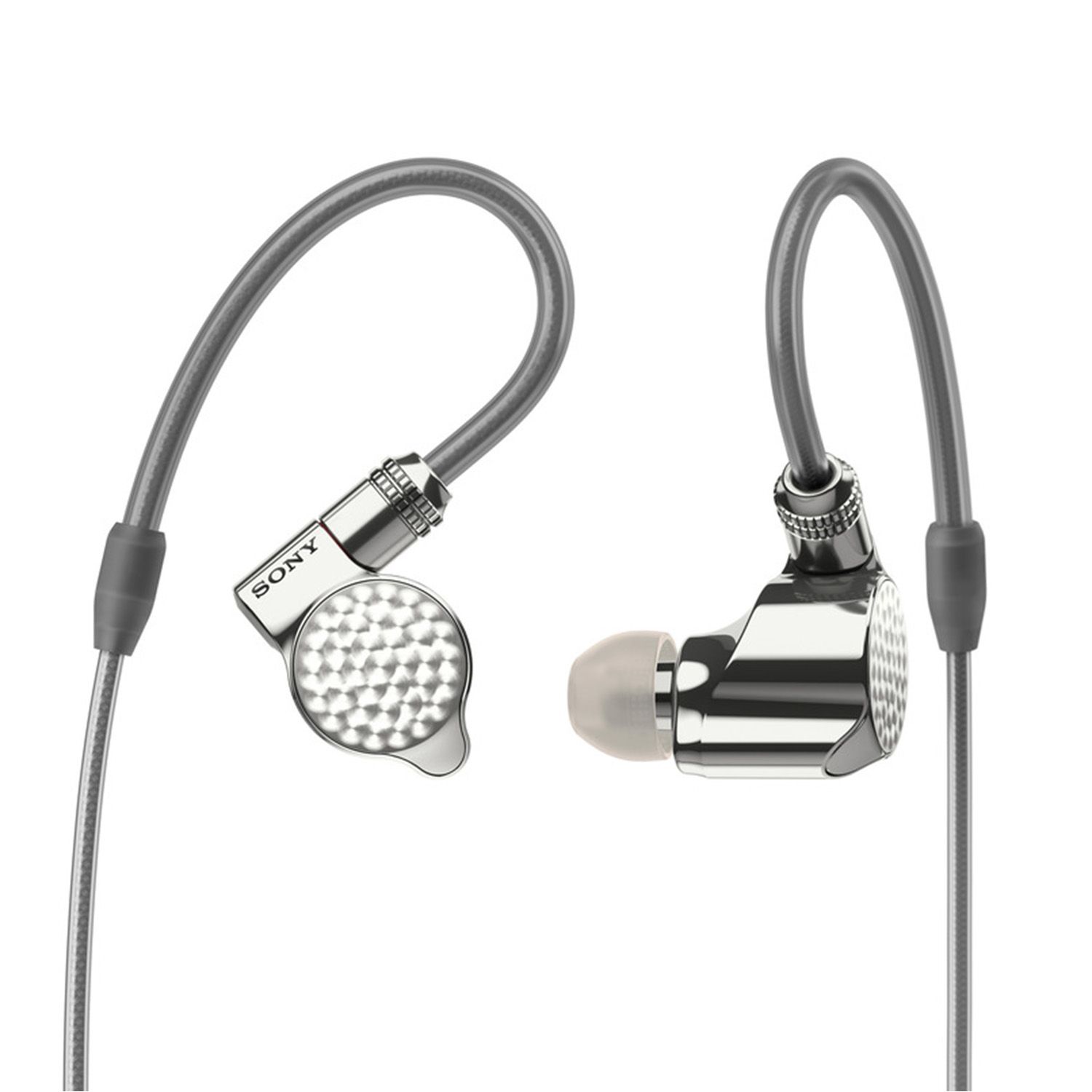Hexavs.IER-Z1R
Sound & Specs Comparison
Information
Both IEMs are widely regarded in the audiophile community. See how they differ in terms of sub-bass response, upper mids, clarity, and overall tonality. Spider charts and rating breakdowns included.
Objective Comparison
Facts, details, stuff.
| General Info | Hexa | IER-Z1R |
|---|---|---|
| Brand | Truthear | Sony |
| Country | China | – |
| IEM Description | HEXA is a high-performance hybrid IEM featuring one 10mm dynamic driver and three balanced armature drivers for a clean, balanced sound. Designed with a DLP-3D printed resin cavity and metal faceplate, it combines precision engineering with comfort. The bass is deep and punchy, the mids are clean and natural, and the highs are smooth and detailed. Its medical-grade shell, reliable build, and premium silver-plated cable make HEXA a standout in its class—offering refined audio performance at an accessible price point. | Despite their small size, the Sony IER-Z1R earphones feature a sophisticated 3-way design with two dynamic drivers and a highly precise balanced armature. The sound quality is not just high-resolution—it's ultra-high-resolution, reaching an impressive frequency response of up to 100 kHz. Housed in a precisely crafted, virtually resonance-free aluminum shell, the design ensures that all three drivers remain in perfect phase alignment. The cables are fully balanced and made from high-purity OFC copper with silver plating for maximum detail retrieval. |
| Price Level | < 100 | 2.000 + |
| Housing & Driver | ||
|---|---|---|
| Driver Config | Hybrid | Hybrid |
| Driver Types | Balanced Armature + Dynamic Driver | Dynamic Driver + Balanced Armature |
| Shell Material | – | – |
| Cable | Four Stands of High-quality Silver-plated Cable | – |
| Technical | ||
|---|---|---|
| Freq Range | 8-40kHz (IEC61094, Free Field) | 3-100.000 Hz |
| Impedance (Ω) | 20.5 | – |
| Sensitivity (dB) | 120 | 103 |
| Crossover | – | – |
| Platform Info | ||
|---|---|---|
| Comments | 0 | 0 |
| Visit Count | 95 | 97 |
| External Reviews | 1 | 1 |
Meta Ratings
In terms of overall sound impression, IER-Z1R notably outshines Hexa. It presents music with noticeably greater accuracy, air, and stereo separation (9.8 vs 8.5). Craftsmanship-wise, It feels significantly more meticulously assembled, reflecting a level of engineering and attention to detail that elevates the product. It’s cable appears notably more premium in both aesthetics and function, from its braid quality to termination. Accessory-wise, It includes substantially more practical and high-quality items, enhancing both protection and usability.
| Hexa | IER-Z1R | |
|---|---|---|
| Sound | 8.5 | 9.8 |
| Comfort Fit | 7.2 | 6.8 |
| Build Quality | 7.7 | 9.8 |
| Stock Cable | 5.3 | 8.5 |
| Accessories | 5.0 | 8.3 |
Sound Characteristics
IER-Z1R enhances basslines with a more energy and grip, giving them a livelier feel compared to Hexa (9 vs 7.5). It translates bass vibrations into a s more visceral experience, while Hexa lacks this tactile feedback (9 vs 6.5). It renders lower mids a more naturally, giving male vocals and instruments a fuller tone than Hexa (8.5 vs 7.5). Upper mids are a more resolving and expressive on It, revealing emotion and articulation better than Hexa (8.5 vs 7.5). Instruments like violins and brass are portrayed with a more brilliance on It, while Hexa sounds slightly dull (9 vs 8.5). The highest frequencies on It feel e more natural and less rolled-off compared to Hexa (9.5 vs 8.5). It creates a overwhelmingly wider soundstage, giving instruments more space and a better sense of placement than Hexa (10 vs 5.5). The retrieval of faint audio cues on It is e more convincing, while Hexa tends to gloss over them (9.5 vs 8.2). In complex arrangements, It separates layers a more distinctly, preventing overlap that Hexa occasionally suffers (9.5 vs 8.5). Instruments remain intelligible on It even during busy sections, showing a better handling of masking than Hexa (9 vs 6). Notes on It feel c more grounded and weighty, whereas Hexa can sound thin or hollow (9 vs 6). It delivers dynamic shifts with overwhelmingly greater impact, making Hexa sound comparatively tame (9 vs 3.5). Hexa handles sibilant sounds a more gently, with fewer peaks and less sharpness than IER-Z1R (10 vs 9.5). IER-Z1R presents instrument timbre with a more natural coloration, giving a realistic tone that Hexa lacks (9.5 vs 8.5). The grain and surface of instruments are rendered a more vividly by Hexa, while IER-Z1R feels flatter (10 vs 9).
| Hexa | IER-Z1R | |
|---|---|---|
| Sub Bass | 9.0 | 9.0 |
| Bass | 7.5 | 9.0 |
| Bass Feel | 6.5 | 9.0 |
| Lower Mids | 7.5 | 8.5 |
| Upper Mids | 7.5 | 8.5 |
| Lower Treble | 8.5 | 9.0 |
| Upper Treble | 8.5 | 9.5 |
| Sound Stage Width | 5.5 | 10.0 |
| Detail | 7.5 | 9.5 |
| Layering | 8.5 | 9.5 |
| Masking | 6.0 | 9.0 |
| Note Weight | 6.0 | 9.0 |
| Slam | 3.5 | 9.0 |
| Sibilance | 10.0 | 9.5 |
| Timbre Color | 8.5 | 9.5 |
| Tonality | 9.0 | 9.0 |
| Texture | 10.0 | 9.0 |
Tonal Signature
// Nothing to compare yet.

